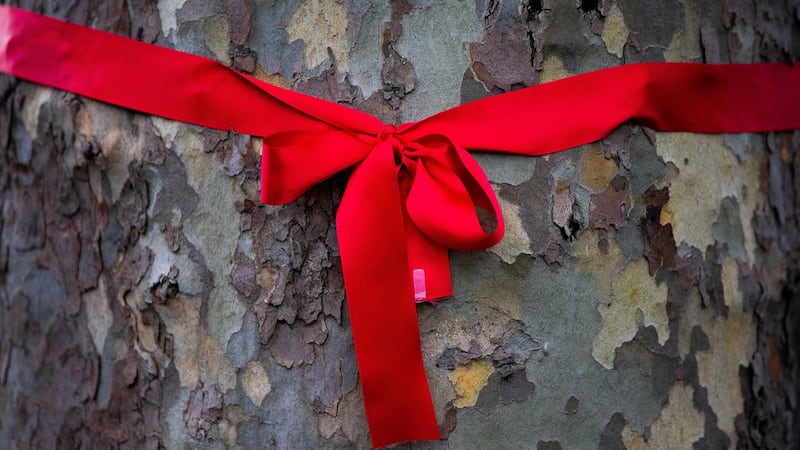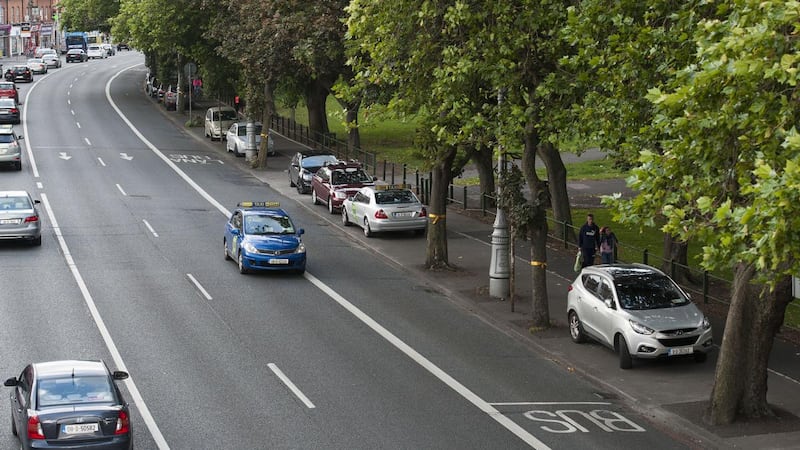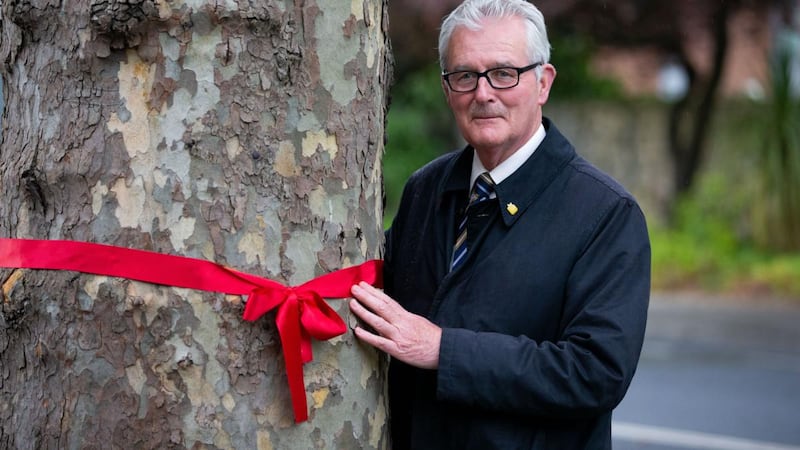“The tree which moves some to tears of joy is in the eyes of others only a green thing that stands in the way...”
Conflicts about the management of our trees and forests are nothing new, as this note from the poet William Blake in 1799 tells us.
However, the way Blake framed the conflict – aesthetic vision versus practicality – may actually be part of the problem. Until society as a whole understands the broad range of benefits provided to us by trees, those who promote their proper management are likely to remain a marginalised, if high-minded, minority, easy for “realists” and “pragmatists” to dismiss as enemies of the common good.
And that’s not good enough, in our era of climate and biodiversity crisis, when resolving such conflicts has become more urgent than ever, but also reveals their painful complexity.
Sometimes the removals are driven by fears of insurance claims for damage and injury
The past year or two have seen a series of heated and ongoing discussions about how we should manage trees. These have taken on particular intimacy and immediacy in small towns such as Fethard in Co Tipperary and Skerries in Co Dublin, where local communities have directly confronted council engineers about the removal, often without consultation, of well-loved street trees.
Meanwhile, many rural communities have been sharply divided over hedge-cutting, and the removal of roadside and farmland trees. Sometimes the removals are driven, as in some urban areas, by fears of insurance claims for damage and injury. Section 70 notices sent out by local councils, warning of private liability if trees fall on public roads, are sometimes received like licences for wanton destruction, whether trees are dangerous or not.
There is a vicious circle here: trees are more likely to fall, causing damage, injury and death, due to more frequent extreme weather events driven by climate change. Yet the trees that are removed, often with culpable lack of discrimination, themselves sequestered carbon. So we are accelerating climate change, however marginally, by clearing them.

Sometimes rural removals are also, perversely, incentivised by the requirements for claiming EU single farm payments.
And now, large areas of the capital are understandably agitated by proposals, under the National Transport Authority’s BusConnects plan, to remove many hundreds of trees to make way for new bus corridors.
In the climate and biodiversity emergency, we cannot always save everything. But we must get our priorities right
This week the authority released a revised plan for BusConnects that will see the number of trees felled increase from 1,600 to 2,449, though fewer “mature” trees will be chopped down.
“Mapping surveys have now been largely completed, and the total number of trees, both roadside trees and off-road trees, impacted by the revised proposals is approximately 2,500 trees. Most of the off-road trees are smaller, more recently planted trees. The replanting scheme will see more trees replanted than the number removed.”

The BusConnects proposals highlight a core issue that the climate and biodiversity crisis is forcing upon us: the need to apply the grim principle of triage.
Triage is the system of prioritisation applied by medical workers on battlefields to decide which of the chronically wounded stand a sufficient chance of survival to merit surgery, leaving the others to die. In the climate and biodiversity emergency, we cannot always save everything. But we must get our priorities right.
Some very well-loved, and very useful, things may have to be sacrificed for the greater environmental and social good, or we may face systems collapse.
Attaching weight
This daunting prospect raises two key questions: on what metrics should we base such troubling prioritisations? And whose expertise should carry most weight when such decisions are discussed?
On the first question, some good work has been done in environmental economics, creating new pricing and valuation scales for costs and benefits that initially may appear fuzzy, or to be comparing apples and oranges. This field of study, based on concepts such as natural capital and ecosystem services, is still young and can be controversial.
But it has the core virtue of revealing a range of values in the environment that conventional economics ignores, to our increasing collective peril. A neoliberal economist looks at a forest and, rather myopically, generally sees only one quantifiable value, the timber that can be sold as a commodity.
The environmental economist reminds us that the same forest is an ecosystem that supplies us with many other services besides timber. Some are quantifiable, like carbon sequestration, pollination benefits to agriculture, flood mitigation and even tourism, health and social cohesion benefits from recreation.
Others, like the intrinsic value of biodiversity, or the aesthetic and spiritual qualities associated with woodlands, are impossible to quantify. But they should also be acknowledged as having a real value to many people.
This kind of analysis gives the lie to a dominant dogma – that private profit is always somehow a public good. In extracting timber, our individual entrepreneur is costing us all in terms of climate, flooding, pollination, health and so on. Where we allow them to extract, they should at least have to compensate us for these damages.
Applying this sort of analysis to BusConnects, we could at least begin to get some clarity on the issues under debate. How much carbon do the trees proposed for removal currently remove from the atmosphere? How much less – or more – carbon will be emitted by cars and buses due to the new system?
And we will need to dig deeper behind these arguments. The NTA promises to plant as many or more trees as they remove. But a sapling, and even a “mature” replanted tree, offers us much poorer ecosystem services – less sequestered carbon, less flood mitigation – than a century-old tree.
Indeed, it takes about 20 years for a tree to become carbon neutral. That is, the carbon emitted in the process of nursery production, transportation, planting and early growth is greater than the tree is capable of storing, with the balance only reversing after two decades. So new trees should be chosen for their longevity, among other factors.
Perhaps a much more radical solution to current congestion might work out better all round – ban all private cars from most of the city most of the time
Indeed, we need to hear a lot more about which species would be replanted, to ensure maximum climate and biodiversity benefits, including much higher rates of native species where feasible. Why not, for example, extend the Native Woodlands Scheme, which has already enhanced one Dublin suburb, into inner city parklands and even brownfield sites?
And perhaps a much more radical solution to current congestion might work out better all round – ban all private cars from most of the city most of the time – and correspondingly enhance low carbon public transport, without widening the roads at all?
On the other hand, if the NTA can demonstrate really significant net carbon benefits from BusConnects that require the removal of a significant number of trees, then some local communities may have to let some beloved elements of their homeplaces go. That’s triage on the climate battlefield.
Real world
Some of the ideas outlined above, like recognising the full range of services provided by an ecosystem, may seem a little arcane. But the really mysterious thing is that they are all already embedded in existing official plans, from EU legislation to local authority level, yet still have very little impact on what happens in the real world.
All three Dublin county councils have sophisticated tree strategies that recognise and highlight all the services trees provide. And a conversation with Leslie Moore, head of park services for Dublin City Council, and trees officer Ludovic Beaumont suggests that they are responding imaginatively to new challenges.
The current Dublin City Council trees strategy ends this year. Moore says they have learned a lot while implementing it, and will reflect that knowledge in the next version.

The council has been developing innovative “greening” programmes with strong community co-operation in several areas: the Liberties, the northeast inner city and (just starting) in Stoneybatter. Experience has shown that the concept “right tree, right place” is much more complex and site-specific than a simple list of appropriate and inappropriate species for urban planting.
Moore stresses that each street has specific characteristics. One size does not fit all.
The problems associated with certain species – cherry trees churning up pavements, for example, or the very large and thick leaves of London plane trees blocking drains – has received a lot of publicity.
But while new species are being trialled, that does not mean that these two species – great favourites with many people – are going to disappear from our urban landscapes.
Moore and Beaumont point out that a whole suite of benefits and costs have to be taken into account when considering which trees to plant where: aesthetics, biodiversity, climate impacts, storm water management and even history.
Much damage to footpaths is due underground competition between roots and utilities (which can also suffer damage)
“There is a historical expectation that certain great avenues will be lined with big trees like plane trees,” says Beaumont. And of course plane trees have always long been welcomed in cities because of their capacity to absorb air pollution. As for cherries, new varieties are being produced with less troublesome roots.
But Moore stresses that the solutions often have as much to do with planting techniques as with the species and variety selected. Trees compete for space on streets with utility cables and pipes underground, with traffic and pedestrians at ground level, and with utility cables and wires again at crown level.
One increasingly frequent solution to competition at ground level is the “build-out”, a projection into the street for tree planting that leaves plenty of footpath space for buggies and wheelchairs. These also have the effect of slowing down urban traffic, though not all motorists will be enthusiastic.
Much damage to footpaths is due underground competition between roots and utilities (which can also suffer damage). The answer is to ensure in advance, through pit and sometimes crate structures, that each tree planted has enough space to allow its roots to develop naturally. It’s evident that this has not always been done in the past.

Street-worthiness
While native tree species are now preferred (for biodiversity reasons) for new planting in Dublin’s parks, some are unsuitable for street planting because of their structure, habits or lifespan.
Rowan, for example, have been found to be too short-lived, while willow scatter their branches too carelessly. So exotics such as the Japanese pagoda tree (Sophora japonica) and American sweetgum (Liquidambar styraciflua) are likely to become more familiar. But we will also be seeing more of our own silver birch, and a particularly beautiful native, the Scots pine, is now favoured for coastal planting.
The cultural fetish for “tidiness” has often dictated the planting of the same species at the same age in a particular area. But Moore says this has already been replaced by more species variation, to avoid the rapid spread of disease, and an uneven age structure, so that the urban forest can be renewed gradually, without sudden wholesale removals at the end of a life cycle.
Environmental and biodiversity experts are appointed to apparently significant positions, but they are brought into key discussions too late
It is clear that a great deal of fresh thought is going into our urban tree strategies. But there is still a widespread concern that these strategies seem to carry too little weight when the big infrastructural decisions, with massive environmental impacts, come to be made. That’s still the realm of the engineers; that’s who the politicians and the business people listen to.
One insider, who has worked in another county council, describes the prevailing environmental culture in our national and local governmental institutions like this: “Environmental and biodiversity experts are appointed to apparently significant positions, but they are brought into key discussions too late. The tree policies they create are good, but they are not high enough on the agenda.
“Biodiversity, green infrastructure, trees – they are all seen as being cosmetic add-ons at best. The engineers say: ‘What we are proposing is what makes the economy work. And you come here to talk about trees? What we are doing is far more important.’
“We need a shift in our whole culture,” he continues. “We need our society to understand that trees are not only important because we like a particular tree on our street. We need to value trees rationally, for the whole range of jobs they do for us.”
History may show us that, in this century, the truly practically minded people are those who understand that trees are not just timber, not just things standing in the way of progress, and not only objects of great beauty, but complex systems on which our wellbeing, and very probably our survival, ultimately depends.
Paddy Woodworth is a member of the steering committee of the Irish Forum on Natural Capital









